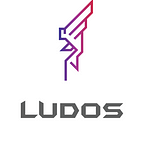Ludos 101: Why Use Sidechains?
Let us take a look at today, why did Ludos choose the structure of the main chain + multiple side chains?
First of all, at this stage, the game industry has many drawbacks:
Limited Genres
Blockchain games have a common theme, limited to pets, mining, and gambling. The market is full of CryptoKitties and Blockcity copycats. Players have low loyalty, high turnover, and a lack of complex and interesting game categories. Blockchain games tend to emphasize the collection, value-added and other gimmicks, encouraging players to invest and make money as part of the game’s core features, this has attracted many speculators who do not care about gameplay, rather than loyal players.
Mainchain congestion
CryptoKitties blocked the Ethereum main network and has become a joke. A single explosive game DApp congesting the entire blockchain network, consuming a lot of computing resources and data storage resources. has proven to be a difficult obstacle in the development of blockchain games.
The Development Threshold is Higher
Blockchain games lack a unified development engine and a complete set of developer toolkits. Game developers often need to face the underlying technical details of the blockchain and cannot concentrate on the development of the game itself. The gas fee mechanism has resulted in blockchain gaming applications that are expensive to operate and difficult to commercialize.
Token Utility
Decentralized gaming platforms often fail to build effective token incentives and community autonomy for developers, artists, and the community of players. The token uses a single scenario and the economy is not perfect enough to provide lasting value to the entire gaming industry.
In response to such problems, Ludos Protocol implements a Plasma-like multi-sidechain system to scale the main chain, a game can issue and peg its assets on the Ludos main chain and perform complex game contract operations and store data at the sidechain level. Meanwhile, Ludos also provides State channels based off-chain smart contract interaction solution as a complementary to the sidechain system. Blockchain game developers can always easily interact with the blockchain system through the toolbox provided by Ludos, despite of all the technical details. Ludos believes that only an infrastructure strong and efficient enough to support multiple scalable DApps can provide its true value.
Ludos’ technical architecture is open and evolving; the team believes that all technology ultimately serves the players. The Ludos Protocol includes a public chain based on the PoW+PoS consensus, builds a multi-game sidechain system, and develops relevant landing DApps and development kits to build a community of game developers and players to validate economic sustainability and related agreements. All of Ludos’ core logic and gameplay logic will be based on smart contract implementations, and record all key data such as game digital assets, core operations during gameplay, and random number generation on the chain, all in an open and transparent manner.
Ludos has three important principles in technical architecture design:
- Ludos strives to be decentralized and trustless.
- Ludos will adopt and integrate mature technology from open source projects.
- Ludos strives to ensure a balance between computing performance and user experience.
Ludos has designed the high-intensity interaction and high real-time requirements of the game scene. Therefore, the Ludos protocol adopts a highly decentralized PoW+PoS consensus backbone , with multiple independent consensus mechanisms and security levels. Game/function sidechains for throughput, data storage, and security and efficiency. The Ludos main chain will be mainly used for the deployment of side chain contracts, the issuance of digital assets, the settlement of transactions and the transfer of value, while the main chain can act as an arbiter of disputes to ensure that assets can be safely returned in the event of a malicious attack on the side chain. The execution of specific services (games, independent functions) is handed over to sidechain processing with higher throughput.
We hope this byte-size look at some of Ludos Protocol’s key features has proven interesting, let us know what you want to see next in the comments below.
About Ludos Protocol
Ludos Protocol is a purpose-built blockchain infrastructure project for the gaming community. As only the third blockchain project to be backed by Japanese investment giant Softbank, Ludos addresses numerous shortcomings in the existing gaming landscape. Its main chain + multi-sidechain architecture allows games to run entirely on their own blockchain, preventing scalability issues that have plagued previous blockchain-based games. Additionally, the Protocol seeks to create a gamer-friendly ecosystem whereby game developers and gamers can come together to easily crowdfund and build on the platform. The use of non-fungible tokens (NFT’s) within the ecosystem will allow gamers to swap assets in one game for assets in another. Finally, through their partnership with FullPay Japan, Ludos will give gamers the chance to use LUD tokens that are earned in-game to shop and buy at a range of retail stores in Japan and later the world.
Ludos Protocol Links
Telegram Channel: https://t.me/LudosProtocol
Telegram Announcement Channel: https://t.me/LudosAnnouncements
Website: https://www.ludos.one/
Facebook: https://www.facebook.com/LudosProtocolOfficial/
Twitter: https://twitter.com/LudosProtocol
Reddit: https://www.reddit.com/r/LudosProtocol/
BitcoinTalk thread: https://bitcointalk.org/index.php?topic=5064140
